Typolitic features invaluable contributions from several leading designers, typographers and writers whose work is referenced in students’ courses. Their commentary provides a unique ongoing pedagogical forum with a fascinating feedback loop between the studied and the student. Also commenting are several guest experts from outside the field.
Emory Douglas worked as the Minister of Culture for the Black Panther Party from 1967 until the Party disbanded in the 1980s. In early 1967, he became involved with the Black Arts Movement at San Francisco State University as a set designer for the Black Communications Project. Emory met Huey Newton and Bobby Seale, founders of the Black Panther Party, at a meeting about the organization’s security detail for (Malcolm X’s widow) Betty Shabazz’s upcoming visit to San Francisco. Emory then joined the Panthers and began going on police patrols in Oakland where he met many of the community members who would later be the inspiration and subject for his work. As the art director, designer, and main illustrator for The Black Panther newspaper, Emory created images that became powerful cultural icons, representing black American struggles during the 1960s and 1970s.
In 2007, The San Francisco Chronicle reported that “He used the newspaper’s popularity to incite the disenfranchised to action, portraying the poor with genuine empathy, not as victims but as outraged, unapologetic and ready for a fight.”
Emory was trained as a commercial artist at City College of San Francisco and has been the subject of several solo exhibitions. His work has also been in numerous exhibitions about the history of the Black Panther Party, including shows at the Arts & Culture Conference of the Black Panther Party in Atlanta, GA in 2008 and “The Black Panther Rank and File” at the Yerba Buena Center for the Arts, San Francisco in 2006. Most recently his work was the subject of a solo exhibition at Urbis, Manchester, UK in 2008-2009. In 2007, artist Sam Durant curated a solo exhibition of Emory’s work at the MOCA Pacific Design Center in Los Angeles, “Black Panther: The Revolutionary Art of Emory Douglas,” which is the inspiration for the presentation at the New Museum. The same year, Rizzoli published a book with the same title that included essays and interviews about Emory’s work and his relationship to the Black Panther Party. Douglas’s work has also been presented at the 2008 Biennale of Sydney, Australia; the African American Art & Cultural Complex, San Francisco; Richmond Art Center, CA; and the Station Museum of Contemporary Art, Houston.
His recent work focuses on collaboration with international indigenous rights groups and artists such as the Zapatistas in Chiapas, Mexico, and Australian Aboriginal artist, Richard Bell in Brisbane.
Rick is a British writer, critic, lecturer and curator, specialising in design, media and visual culture. He is Visiting Professor in Design Criticism and Research Methods at the postgraduate Royal College of Art in London.
He was the founding editor of Eye magazine in London, which he edited from 1990 to 1997, and he has contributed the “Critique” column to Eye since 1999. He has written a regular column for Print magazine since 2000. His articles, essays and reviews have appeared in I.D., Metropolis, Harvard Design Magazine, Adbusters, Blueprint, Icon, Frieze, Creative Review, Etapes, Domus, The Guardian, Financial Times and many other publications. In 2003, he was a co-founder of Design Observer.
Poynor’s first book, with the artist Russell Mills, was More Dark Than Shark (1986), a study of Brian Eno. Typography Now: The Next Wave (1991), the first survey to document the new digital typography, became an international bestseller. Poynor’s books about design and the visual arts include Vaughan Oliver: Visceral Pleasures (2000); Typographica (2001); No More Rules: Graphic Design and Postmodernism (2003); Communicate: Independent British Graphic Design Since the Sixties (2004); and Jan van Toorn: Critical Practice (2008). He has published three collections of his essays and cultural criticism: Design Without Boundaries (1998); Obey the Giant: Life in the Image World (2001); and Designing Pornotopia (2006).
He has contributed essays and chapters to many publications, among them Commodification and Spectacle in Architecture (2005); Looking Closer Five: Critical Writings on Graphic Design (2006); Design and Art (2007); Colors Notebook: Violence (2008); Now is the Time: Art & Theory in the 21st Century (2009); Design in Britain (2009); Postmodernism: Style and Subversion, 1970-1990 (2011) and Re-view: New Perspectives on the Collection of the Stedelijk Museum (forthcoming). In 2007, he was a featured interviewee in the hit documentary Helvetica.
In 2004, he was curator of a major survey exhibition, “Communicate: Independent British Graphic Design since the Sixties”, at the Barbican Art Gallery, London. The show travelled to China and Switzerland. In 2009, he curated “Typographica” at the Kemistry Gallery, London. His most recent exhibition, “Uncanny: Surrealism and Graphic Design”, the first international and historical survey of this subject, ran at the Moravian Gallery in Brno, Czech Republic, in the summer of 2010 and at the Kunsthal, Rotterdam, in fall 2011.
Poynor was a Visiting Professor at the Royal College of Art (1994-1999) and a Research Fellow at the college (2006-2009). He has also taught at the Jan van Eyck Academie in Maastricht. He is a frequent lecturer and has spoken about design and visual culture at public events, conferences and design schools throughout Europe, the United States, Australia, and China.
Sarah is a producer and broadcaster with ABC Radio National and currently presents a variety of programs, including Airplay, Creative Instinct, Into the Music, Poetica, Sunday Story and Weekend Arts. She has made feature programs and documentaries in Australia and overseas for the ABC.
She is also an essayist and reviewer, with work appearing in The Monthly, The Australian Book Review, The Australian Literary Review, Eureka Street, HEAT, Meanjin, and Griffith Review.
After her B.A, Sarah won a Commonwealth Scholarship to Oxford University where she completed a Masters in Philosophy in English Studies. She has also taught English language in Ecuador, tended goats in Chile, and cleaned toilets in Israel. The novels of Philip Roth and the poetry of Rilke accompany her everywhere.
Winner of the Media Ecology Association’s first Neil Postman award for Career Achievement in Public Intellectual Activity, Dr. Douglas Rushkoff is an author, teacher, and documentarian who focuses on the ways people, cultures, and institutions create, share, and influence each other’s values. He is technology and media commentator for CNN, digital literacy advocate for Codecademy.com and has taught and lectured around the world about media, technology, culture and economics.
His new book, Present Shock: When Everything Happens Now, explores the always-on, simultaneous society in which we live, as well as how this new temporal landscape influences media, culture, economics, politics, and meaning. His previous best-selling books on media and popular culture have been translated to over thirty languages. They include Program or Be Programmed: Ten Commands for a Digital Age, a followup to his Frontline documentary, Digital Nation, and Life Inc, an analysis of the corporate spectacle, which was also made into a short, award-winning film.
His other books include Cyberia, Media Virus, Playing the Future, Nothing Sacred: The Truth about Judaism, Get Back in the Box: Innovation from the Inside Out and Coercion, winner of the Marshall Mcluhan Award for best media book. Rushkoff also wrote the acclaimed novels Ecstasy Club and Exit Strategy and graphic novel, Club Zero-G. He wrote the graphic novels Testament and A.D.D., for Vertigo.
He has written and hosted three award-winning PBS Frontline documentaries - The Merchants of Cool looked at the influence of corporations on youth culture, The Persuaders, about the cluttered landscape of marketing, and new efforts to overcome consumer resistance, and most recently, Digital Nation, about life on the virtual frontier.
His commentaries have aired on CBS Sunday Morning and NPR’s All Things Considered, and have appeared in publications from The New York Times to Time magazine. He wrote the first syndicated column on cyberculture for The New York Times and Guardian of London, as well as regular columns for Arthur, Discover Magazine and The Feature. He also hosted is own radio program on WFMU, The Media-Squat.
Rushkoff has taught regularly for NYU’s Interactive Telecommunications Program, The New School University, the MaybeLogic Academy and the Esalen Institute. He also lectures about media, art, society, and change at conferences and universities around the world.
He has served on the National Advisory Board of the National Association for Media Literacy Education, The Harrington School of Communications and Media at University of Rhode Island, the Board of Directors of the Media Ecology Association, The Center for Cognitive Liberty and Ethics, the United Nations Commission on World Culture, and as a founding member of Technorealism. He is on the Advisory Boards of MeetUp.com, Liquid Information, Artizens, and World Wide Workshop. He has been awarded a Fullbright Scholarship, and Senior Fellowships by the Markle Foundation, the Center for Global Communications, and the International University of Japan. He served as an Advisor to the United Nations Commission on World Culture and regularly appears on TV shows from NBC Nightly News and Larry King to the Colbert Report and Bill Maher. He developed the Electronic Oracle software series for HarperCollins Interactive.
Rushkoff is on the board of several new media non-profits and companies, and regularly consults on new media arts and ethics to museums, governments, synagogues, churches, universities, and even Fortune 500 companies that are willing to listen to reason.
Rushkoff earned his PhD in New Media and Digital Culture from Utrecht University with a dissertation entitled Monopoly Moneys: The media environment of corporatism and the player’s way out. He graduated magna cum laude from Princeton University, received an MFA in Directing from California Institute of the Arts, a post-graduate fellowship (MFA) from The American Film Institute, a Fulbright award to lecture on narrative in New Zealand, and a Director’s Grant from the Academy of Motion Picture Arts and Sciences. He has worked as a certified stage fight choreographer, an SAT tutor, and as keyboardist for the industrial band PsychicTV.
Jonathan is one of the most well-known graphic designers in Britain. Since 1990 he has chosen to work with a mixture of cultural institutions, activist groups and charities as well as completing a steady stream of personal posters. He is also known for his collaborations with Adbusters, Damien Hirst, his work for David Bowie and his ubiquitous fonts designs released through Emigre and his company Virusfonts. His contribution to graphic design was recognised by a major exhibition at the Design Museum in London. His monograph, published by Rizzoli is available here.
Ellen is a writer, curator, and graphic designer. She is director of the Graphic Design MFA program at Maryland Institute College of Art (MICA) in Baltimore, where she also serves as director of the Center for Design Thinking. As curator of contemporary design at Cooper-Hewitt, National Design Museum since 1992, she has produced numerous exhibitions and books, including Mechanical Brides: Women and Machines from Home to Office (1993), Mixing Messages: Graphic Design and Contemporary Culture (1996), Letters from the Avant-Garde (1996), and Skin: Surface, Substance + Design (2002).
Her book Thinking with Type (2004) is used by students, designers, and educators worldwide. D.I.Y.: Design It Yourself (2006), co-authored with her graduate students at MICA, explains design processes to a general audience. D.I.Y. Kids (October 2007), co-authored with Julia Lupton, is a design book for children illustrated with kids’ art. The Lupton twins’ latest book is Design Your Life: The Pleasures and Perils of Everyday Things (St Martin’s Griffin, 2009).
Other books include Graphic Design: The New Basics (with Jennifer Cole Phillips, 2008) and Indie Publishing: How to Design and Produce Your Own Book (2008). She is the co-author with Abbott Miller of several books, including The Bathroom, the Kitchen, and the Aesthetics of Waste (1992), Design Writing Research (1996), and Swarm (2006).
Ellen is a 2007 recipient of the AIGA Gold Medal, one of the highest honors given to a graphic designer or design educator in the U.S.
Ellen has contributed to various publications, including Print, Eye, I.D., and Metropolis. She has published essays and illustrations in The New York Times. A frequent lecturer around the U.S. and the world, Ellen will speak about design to anyone who will listen.
Ben is Publishing Director of Penguin Australia, overseeing the editorial and design processes. He has worked in publishing for fifteen years in Australia and the UK.
Anne Elizabeth Moore is an internationally renowned cultural critic based in Chicago. A Fulbright scholar, UN Press Fellow, and the Truthout columnist behind Ladydrawers: Gender and Comics in the US, she is the author of several award-winning books. Cambodian Grrrl: Self-Publishing in Phnom Penh (Cantankerous Titles, 2011) received a Lowell Thomas Travel Journalism Award for best book from the Society of American Travel Writers Foundation in 2012. Hey Kidz, Buy This Book (Soft Skull, 2004) made Yes! Magazine‘s list of “Media That Set Us Free” and Reclaim the Media’s 2004 Media and Democracy Summer Reading List. The first Best American Comics made both Entertainment Weekly‘s “Must List” and Publishers Weekly‘s Bestsellers List. Unmarketable: Brandalism, Copyfighting, Mocketing, and the Erosion of Integrity (The New Press, 2007) made Reclaim the Media’s 2007 Media and Democracy Summer Reading list and was named a Best Book of the Year by Mother Jones. Anne herself was recently called a “general phenom” by the Chicago Reader and “one of the sharpest thinkers and cultural critics bouncing around the globe today” by Razorcake.
Anne has worked with young women in Cambodia on independent media projects, and with people of all ages and genders on media and gender justice work in the US. Her journalism focuses on the international garment trade. Anne exhibits her work frequently as conceptual art, and has been the subject of two documentary films. She has lectured around the world on independent media, globalization, and women’s labor issues. Co-editor and publisher of the now-defunct Punk Planet, and founding editor of the Best American Comics series from Houghton Mifflin, Moore teaches in the Visual Critical Studies and Art History departments at the School of the Art Institute of Chicago.
The multi-award-winning author has also written for The Baffler, N+1, Al Jazeera, Good, Snap Judgment, Bitch, the Progressive, The Onion, Feministing, Snap Judgment, The Stranger, In These Times, The Boston Phoenix, and Tin House. She has twice been noted in the Best American Non-Required Reading series. She has appeared on CNN, WNUR, WFMU, WBEZ, Voice of America, GritTV with Laura Flanders, Radio Australia, and NPR’s Worldview, and others. Anne mounted a solo exhibition at the Museum of Contemporary Art in Chicago in 2011 and in 2012 participated in Artisterium, the Republic of Georgia’s annual art invitational. Her work appeared in the 2008 Whitney Biennale, has been exhibited in the Spinnerei in Leipzig Germany in 2010, and made up one of the first conceptual art exhibitions in Phnom Penh, Cambodia in 2010. Her work has been featured in USA Today, Marie Claire, Phnom Penh Post, Portland Mercury, Bust, Entertainment Weekly, Time Out Chicago, Hyphen Magazine, Truthout, Make/Shift, Bookslut, Today’s Chicago Woman, New York Review of Books, Windy City Times, Print Magazine, and the New York Times, among many more. She has lectured at close to a hundred universities, libraries, alternative spaces, and conferences around the globe.
Her good friend and one of her favourite writers Elizabeth Crane wrote a short story about her that was widely reviewed, and thus the Village Voice once called Moore a “Possibly perfect protagonist.” Washington City Paper mused she must be “A woman who has always been comfortable in her own skin,” and Hipster Book Club called her “A perfect altruistic punk-rock super-heroine.”
Her recent book New Girl Law: Drafting a Future for Cambodia (Cantankerous Titles, 2013), the follow-up to Cambodian Grrrl, was called “a post-Empirical proto-fourth-wave feminist memoir” by Bust. She likes cats and pie.
From being described as a ‘typographic evangelist’ by Eye magazine through to being cross-examined by Julian Burnside QC as a typographic expert in the Federal Court, Stephen has lived a life full of type. He is founder of Letterbox, a typographic studio based in Melbourne, Australia. Rather than writing about how to kern Clarendon Bold at 144 point, Banham’s typographic explorations centre on the social and cultural aspects of letterforms. He has written and produced over 16 publications on typography, including the Qwerty series (1991-96), the Ampersand series, Fancy (2004) and the Oblique series (2008–). His latest book, Characters: Cultural Stories revealed through typography, was published by Thames and Hudson and is available here.
Banham’s design work and writings have appeared in countless type international publications. He has spoken at international design events from Barcelona to Beirut, New Zealand to New York. A member of the International Society of Typographic Designers, Banham has been a lecturer in typography since 1991 and holds a Masters in Design Research. In 2011 he was awarded a creative fellowship at the State Library of Victoria.
Born in Norwich, UK (1965), Nick left school at 16. He studied graphic design during the economic boom years of the mid 1980s. Enthusiastically, on a BTEC National Diploma at Great Yarmouth College of Art and Design and then earnestly on a BA at the London College of Printing (now LCC). He entered the design profession in 1987 at the time of the Black Monday stock market crash.
Foolhardy as it might seem, Nick set up his own design practice in 1988 yet quickly found a voice that chimed with a moment suffused with a cocktail of Cranbrookian anxieties and Studio Dumbar-esque excess. His overwrought and somewhat precious early efforts recorded in the compilation that was to launch graphic design publishing – Typography Now, edited by Rick Poynor.
Much more recently, Nick Bell has become reasonably well known, in the museum world, for his studio’s collaborations in exhibition design (notably with Casson Mann) and before that for his creative directorship of Eye, the graphic design magazine of critical writing – college tutors may remember him, should current students be drawing a blank.
In 1992 (the year of Black Wednesday when the British Conservative government blew £3.3 billion withdrawing the pound from the ERM) the Californian design magazine Emigre devoted an entire issue to Nick Bell’s work, that of his students at LCP, and to his critical thinking and teaching methodology – that which it was at this time at least. Rick Poynor would later hold up this particular issue as evidence of Emigre editor Rudy VanderLans’ aversion to editing.
The Nick Bell who was D&AD President in 2003 is not the same Nick Bell – he is a high-flying advertising creative director. In 2008 (year of the worst financial crisis since the Great Depression) our Nick Bell was appointed Visiting Professor of Graphic Design at London’s Royal College of Art. He is now a Visiting Critic.
In 2009, (the year the Royal Bank of Scotland posted the biggest annual loss in British corporate history of £24 billion whilst granting a £693,000 a year pension to their former chief executive) Nick became a member of Alliance Graphique International (AGI).
A little self-consciously, Nick sees his career to date as falling into four distinct episodes. One: leaning on others to live cheaply enough to afford to experiment and learn. Two: keeping a lid on overheads so the work can remain fulfilling. Three: working for a Russian billionaire. Four: not working for the Russian billionaire.
Nick Bell would like it known that he has had to sell his house and studio on two separate occasions to keep his business afloat. He says that he has only made money on property – apart from the brief period with the billionaire. Bell lives in London’s East End with his partner and young daughter.
Born in Paris in 1942, Pierre studied graphic design at the Ecole Nationale Supérieure des Arts Décoratifs (ENSAD) in Paris. He studied poster art in Warsaw with Henryk Tomaszewski and went on to obtain his master’s degree from the Institut de l’Environment in Paris in 1971.
Pierre founded Grapus in 1970 with two graphic designer friends, Gérard Paris-Clavel and François Miehe, who were joined by Alex Jordan and Jean-Paul Bachollet in 1976. Twenty years later, in 1990, Grapus ceased its activities. That same year, the group was awarded the French Grand Prix National des Arts Graphiques.
He then founded the Atelier de Création Graphique and designed, among other projects, the visual identities of the Louvre Museum and the French National Parks. From 2001 until 2008 the Atelier designed posters and communications material for the Pompidou Center.
An AGI member since 1987, Pierre taught graphic design at ENSAD until 2007. He was awarded the 2006 Erasmus Prize for his work in the area of “design for the public domain.”
Pierre Bernard died on 23 November 2015.
Tony leads the Master of Design Futures program and teaches Design Futures theory courses across all disciplines at QCA, Griffith University. He is a designer, design theorist, cultural theorist, educator and farmer. He was the founding director of the EcoDesign Foundation, Sydney (1991-2001) and formerly Adjunct Professor, Faculty of Design, Architecture and Building, University of Technology, Sydney, (1998-2001); Honorary Research Associate, University of Sydney (1996-2001); Associate Director University of Sydney National Key Centre of Design Quality (1991-92); Senior Lecturer in Design History and Theory, Power Institute, University of Sydney (1985-96).
He has held visiting professorships, lectureships and fellowships at universities in Australia, Asia, Europe and the USA. As a consultant Tony has worked in many areas of design, sustainability and futures for the corporate sector, professional organisations and government. He was also an environmental design manager for several Sydney Olympics venues. Tony has been a member of award winning design teams for both national and international projects and design competitions.
Tony is the author of ten books, numerous book chapters and articles. His latest book – Becoming Human by Design by Berg Publishers is available here.
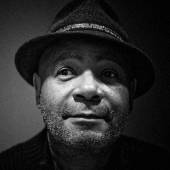


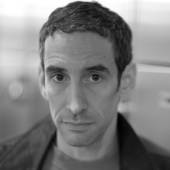
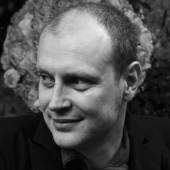


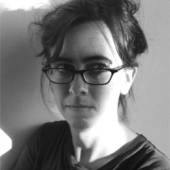


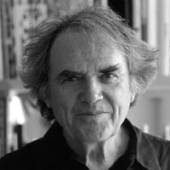

Guest contributors